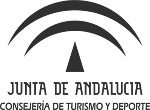Basal and post-exercise heart rate variability correlates with training load in endurance athletes
Abstract
Objective: Heart rate variability has been proposed as a valid method to examine the individual response to training load in endurance athletes. Thanks to this tool, the relationship between basal and post-exercise Heart rate variability measurements can be analyzed during a microcycle (one week) using straight values or their coefficients of variation.
Method: Ten amateur endurance athletes (n = 5 men, n = 5 women) were monitored during a 7-day microcycle that included three road-cycling sessions, two running sessions and two trail-running sessions. The RR series were measured for 5 minutes upon wake up and after training, in a seating position, using a chest strap.
Results: Basal and post-exercise Heart rate variability measurements showed high correlation when weekly mean values were used, very similar to when coefficients of variation values were used. In women, the root mean square of successive differences (RMSSD) was: r= 0.73; RMSSD coefficients of variation (RMSSDcv) was: r= 0.66; natural logarithm (Ln) RMSSD: r= 0.68; LnRMSSDcv: r= 0.79; and in men it RMSSD was: r= 0.78; RMSSDcv: r= -0.62; LnRMSSD: r= 0.75; LnRMSSDcv: r= -0.73).
Conclusion: the relationship between these two measurements could be useful to program the training loads of the following microcycle.


